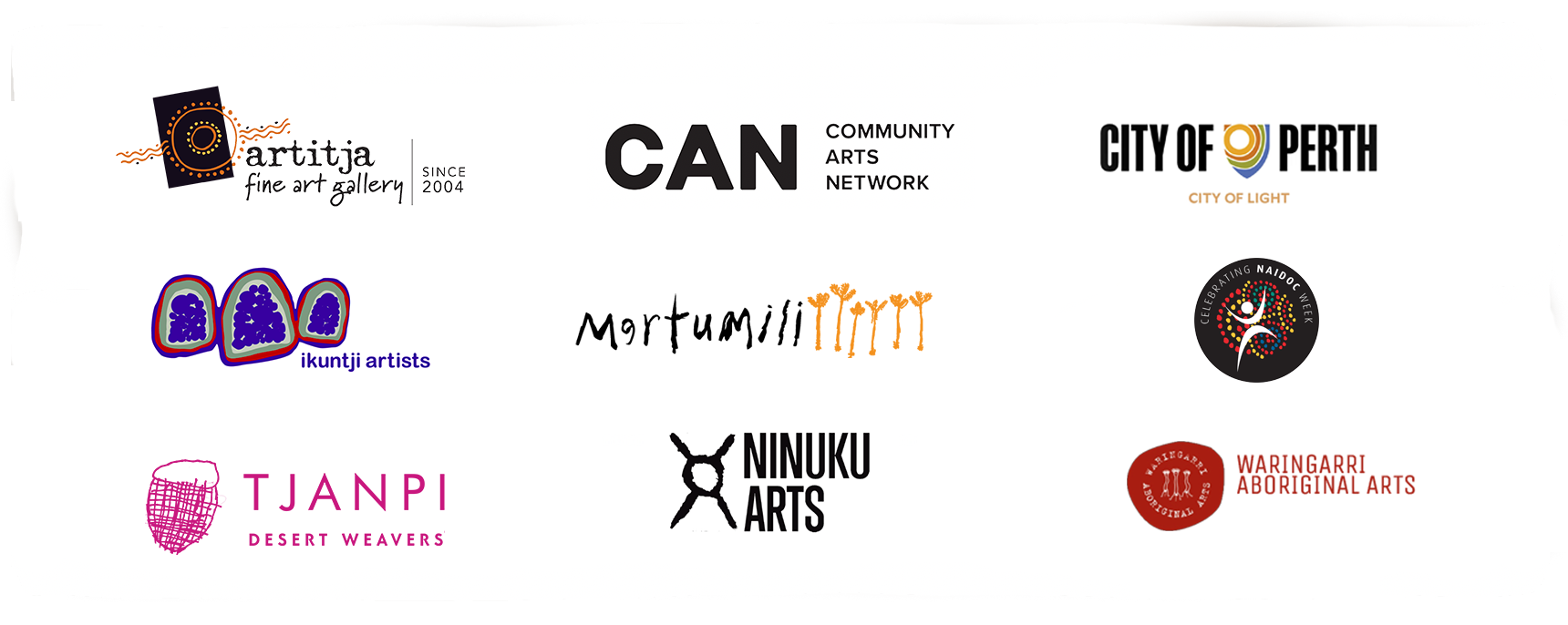THE CITY OF PERTH URBAN SCREENS PRESENT
GOOLOGOOLUP NAIDOC SCREENINGS 2025
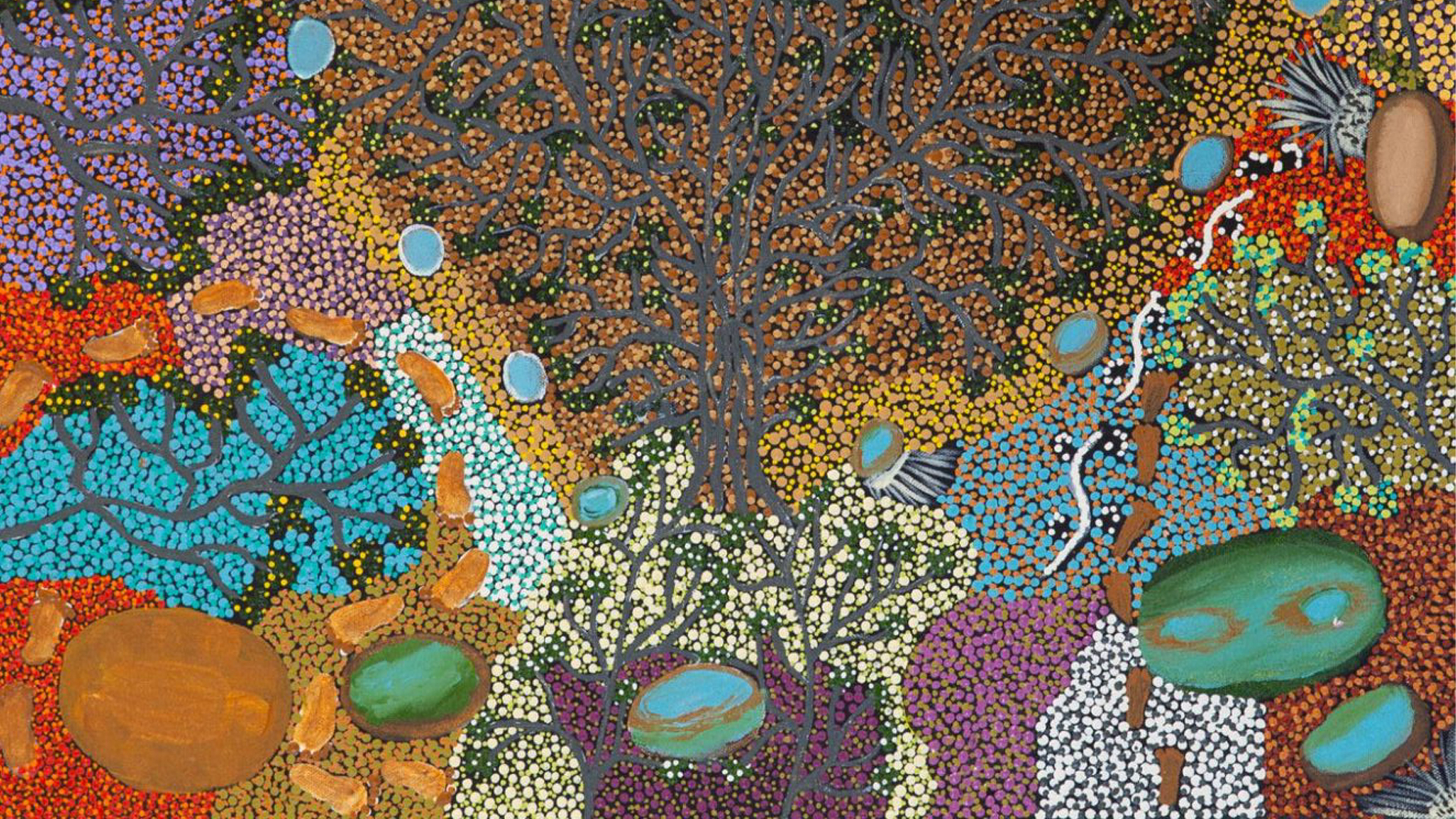
INDIGENOUS ART ON THE SCREENS
Northbridge Piazza superscreen + Forrest Place Arts Screen
July 2025
FREE
The City of Perth Northbridge Piazza Superscreen, in collaboration with Artitja Fine Art Gallery, Community Arts Network, Ikuntji Artists, Martumili Artists, Ninuku Arts, Tjanpi Desert Weavers, Waringarri & Kira Kiro Artists, present a multi-week program of Indigenous Art on the Northbridge Piazza and Forrest Place Screens in celebration of NAIDOC Week.
This incredible schedule of Indigenous art and culture features film, sculpture and painting from communities across Australia.
Image credit:
Sandalwood Tree and Bush Medicine (2024), Noreena Kadibil
Image courtesy of Martumili Artists
GOOLOGOOLUP NAIDOC SCREENINGS
NAIDOC (National Aboriginal and Islanders Day Observance Committee) Week occurs annually in July to celebrate the history, culture, and achievements of Aboriginal and Torres Strait Islander peoples. This event is celebrated not only within Indigenous communities but also by Australians nationwide.
In celebration of NAIDOC 2025, the City of Perth Urban Screens, in collaboration with Artitja Fine Art Gallery, Community Arts Network, Ikuntji Artists, Martumili Artists, Ninuku Arts, and Tjanpi Desert Weavers, Waringarri & Kira Kiro Artists presents The Goologoolup NAIDOC Screenings. This multi-week program showcases Indigenous art, featuring films, sculptures, and paintings from art communities across Australia.
This year’s theme, chosen by the National NAIDOC Committee, is “Next Generation: Strength, Vision and Legacy.” It celebrates past achievements and the bright future ahead—empowered by our young leaders, the vision of our communities, and the legacy of ancestors.
This exhibition would not be possible without the generous contributions of the many hundreds of participating artists. We thank them for their voices, their stories, and their enduring contributions to this shared cultural experience.
Goologoolup is a Noongar place name for the area originally encompassing the lowlands near Lake Kingsford and Lake Irwin after European contact. Today, this area includes the site near Perth Train Station, situated between the two screening locations: the Northbridge Piazza Superscreen and the City of Perth’s Forrest Place Arts Screen.
The annual screenings, created as a way of increasing the public realm’s response to the National Week of Observance organised by the National Aborigines and Islanders Day Observance Committee, have blossomed from a single weekend of screenings into a month-long celebration of national Indigenous arts.
National NAIDOC 2025 marks 50 years of honouring and elevating Indigenous voices, culture, and resilience. The Goologoolup NAIDOC Screenings have been part of the City’s NAIDOC celebrations since 2018.
.
EXHIBITIONS
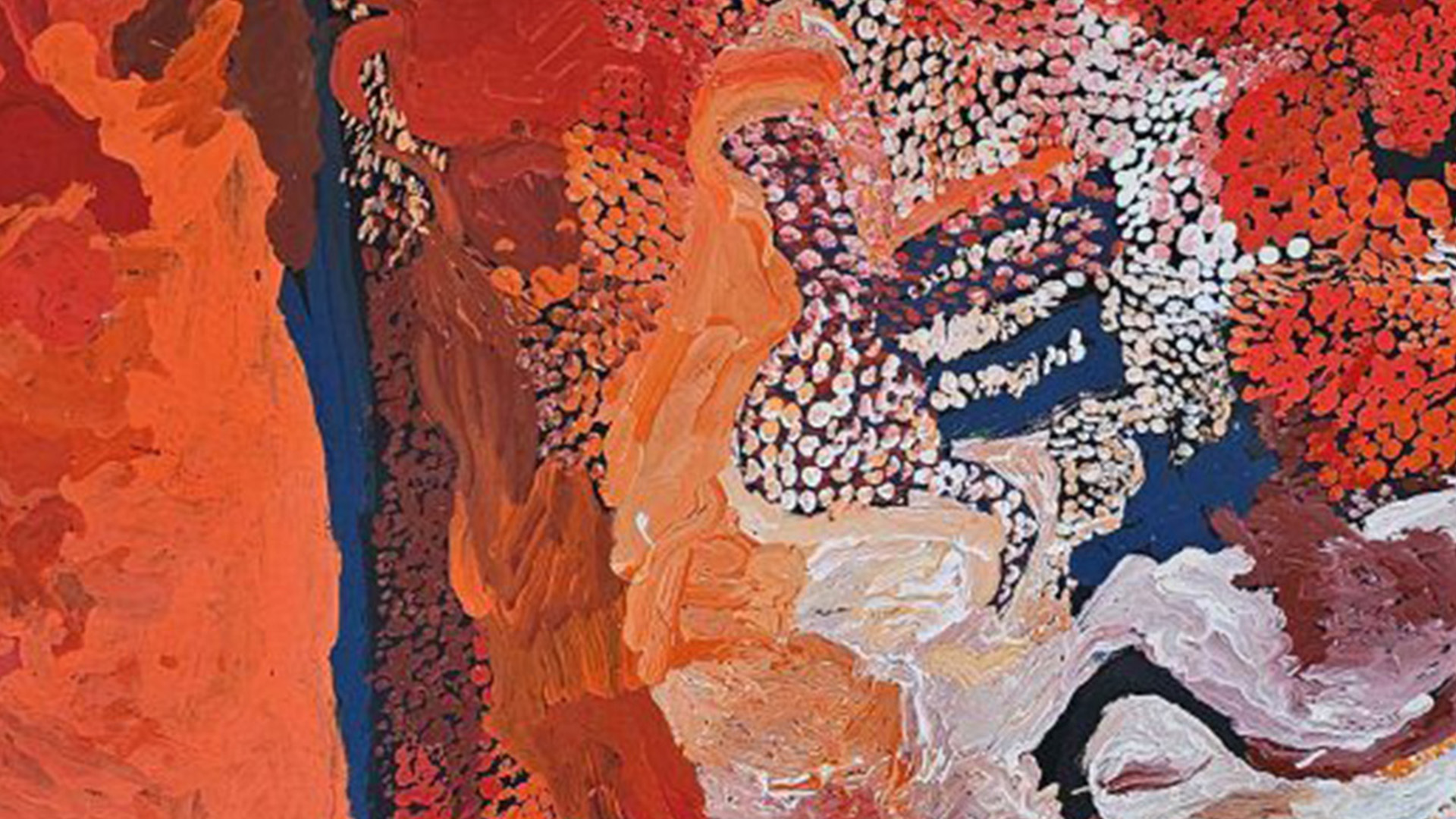
Artitja Fine Art Gallery | Seven Sisters – The Collector’s Show
Seven Sisters – Kungkarangkalpa – is one of the most powerful and enduring Tjukurpa (Ancestral Law) songlines in Australia’s First Nations culture. This rich, ancient narrative spans thousands of kilometres across Aboriginal lands, telling the story of seven ancestral women fleeing from Wati Nyiru, a shape-shifting trickster figure. As they travel across Country, they transform the landscape—ultimately taking flight into the sky, becoming what is now known as the Pleiades star cluster.
The Seven Sisters story is shared by many Aboriginal communities, each offering their own interpretation based on their language, Country, and cultural context. At its heart, the story speaks of escape, resilience, transformation, and the sacred and inseparable relationship between land, sky, and people.
Far more than a myth from the past, Kungkarangkalpa is living Tjukurpa—active Law—held in Country, carried in ceremony, sung in song, and kept alive in the hearts of the people. As the sisters journeyed, they shaped the land, leaving behind waterholes, rock formations, and sacred sites that are still honoured and protected today. This story is not only a cultural inheritance—it is a map, a guide, and a legacy.
The Tjukurpa follows the sisters as they travel together, constantly pursued by Wati Nyiru, who uses magic and deceit to try to capture them. But the sisters are strong, clever, and united. They fly, hide, and outwit him, shaping the land as they go. Embedded within the story are deep teachings about women’s strength, kinship, survival, and the importance of maintaining respect and Law between men and women.
The works in this exhibition come from art centres predominantly across the APY and NPY Lands—places where culture continues to thrive, and where senior women pass down these stories to younger generations through painting, dance, and ceremony. These paintings are more than artworks; they are expressions of knowledge, acts of memory, and tools of education. They are part of the ongoing work of cultural preservation and renewal.
Image Credit
Detail of Angkaliya Curtis – Cave Hill
122x152cm | ART200873AC
Courtesy of Artitja Fine Arts
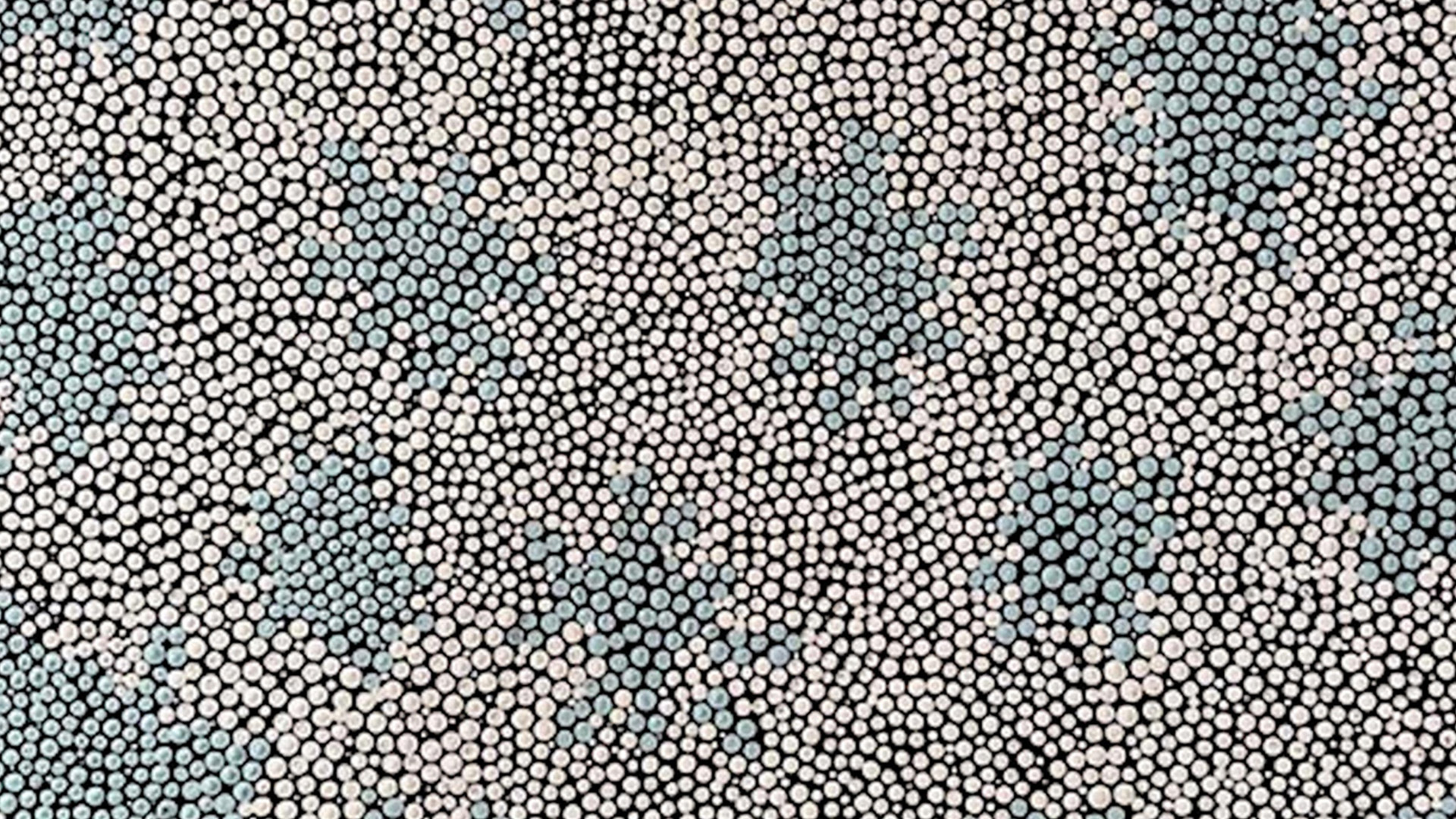
NINUKU ARTS
Ninuku Arts was founded in 2006 by a small group of Pitjantjatjara and Ngaanyatjarra artists in a modest mud-brick building in the Kalka Community, located in the far north-west corner of South Australia. Today, the art centre supports a rotating roster of nearly forty artists and makers living in both Kalka and Pipalyatjara—two of the most remote communities on the Anangu Pitjantjatjara Yankunytjatjara (APY) Lands.
Artists come to work on a nearly daily basis, and the studio serves as the social and cultural heart of both communities. It is a place not only to sit and work alongside family but also to share gossip and stories of the near and distant past.
Over the past decade, the art centre has exhibited work nationally and internationally, gaining recognition for its powerful colour palettes and the diversity of styles, techniques, and mediums expressed by each artist. While the origins of Ninuku’s creative output lie in the traditions of Western Desert dot painting, artists have evolved their practices to include loose brush techniques as well as tjanpi (grass) and punu (wood) sculpture.
Works from Ninuku Arts are exhibited daily throughout July on the City of Perth’s Northbridge Piazza Superscreen and Forrest Place Arts Screen, as part of the Goologoolup NAIDOC Screenings. See the festival guide for screening times.
Image Credit, detail of Delores Miller
Mrs Miller’s Country
2025
acrylic on canvas, 87 x 59 cm,
courtesy of Ninuku Arts
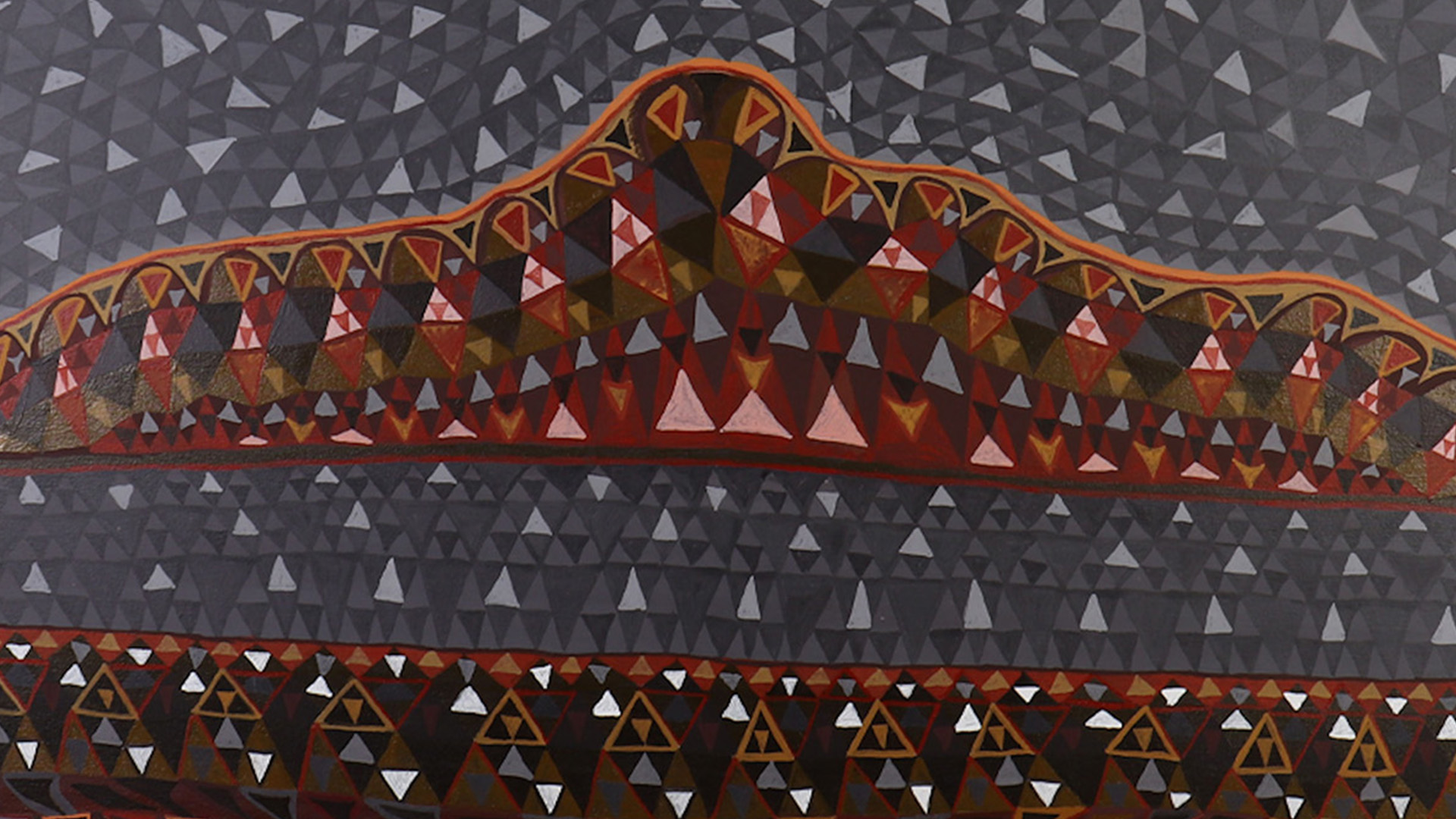
Waringarri & Kira Kiro Artists
\Waringarri Aboriginal Arts is a living, growing art centre celebrating the uniqueness of Miriwoong cultural identity.
Established in the 1980s, in the heart of Miriwoong country at Kununurra in the Kimberley region of northern Australia, Waringarri artists share the importance of their Country and Culture.
Kira Kiro Artists is the Kalumburu community’s recognised art centre, located on the land of the Kwini people in north-western Western Australia.
Kira Kiro (also spelled Kirri Kirri) are Kwini spiritual figures featured in the rock art galleries around Kalumburu, believed to have been painted by the beak of the Sandstone Strike Thrush using blood from the tips of its wings. The name was adopted by senior artist Mary Punchi Clement, known for her intricate depictions of the region’s flora, fauna, and associated stories.
Artistic practice is grounded in the rock art tradition—particularly the Wandjina (or “rain maker”) and Kira Kiro or Gwion Gwion figures, considered the helpers of the Wandjina. Contemporary works also explore secular themes, including land animals, sea life, and seasonal flora, with a strong focus on bush foods and medicinal plant knowledge. Artists work with natural ochre pigments on canvas, paper, and bark, and many are also skilled boab nut engravers.
Art practice has long played both cultural and economic roles in Kalumburu. Kira Kiro Artists is jointly managed by Waringarri Aboriginal Arts and local Kalumburu arts workers.
Image credit:
Ben Galmirr Ward – Bilbjiim | 2024
Natural pigments and ochre on canvas
105 x 118 cm.
Courtesy of Waringarri & Kira Kiro Artists

Martumili Artists | Kujungka
Kujungka is the third exhibition following Mirrka (2023) and Waru (2022), which respectively celebrated many of the bushfoods that have sustained Martu people over thousands of years, and the importance of traditional fire uses.
Kujungka speaks to a sense of connectedness, reflecting the Martu vision to preserve cultural traditions, knowledge, and Country. Whilst desert life has moved away from mobile hunter-gatherer subsistence throughout the course of the twentieth century, bush tucker continues to be a significant component of the modern Martu diet. Hunting and gathering bush tucker remains equally valuable as an important cultural practice that is passed on intergenerationally, and still practiced today.
Martumili Artists was established by Martu people living in the communities of Parnpajinya (Newman), Jigalong, Parnngurr, Punmu, Kunawarritji, Irrungadji and Warralong, and it draws on strong influences of aboriginal art history. After long and cautious observation of other desert artists’ experiences of the art market.
The artists and their families are the traditional custodians of vast stretches of the Great Sandy, Little Sandy and Gibson Deserts as well as the Karlamilyi (Rudall River) area.
Kujungka exhibits daily through July on the City of Perth’s Northbridge Piazza Superscreen and Forrest Place’s Arts Screen as part of the Goologoolup NAIDOC Screenings. See the festival guide schedule for screening times.
Image Credit, detail of
Marianne Burton | Punmu Waterholes
2024 | 30 x 30 cm
acrylic on canvas
courtesy of Martumili Artists
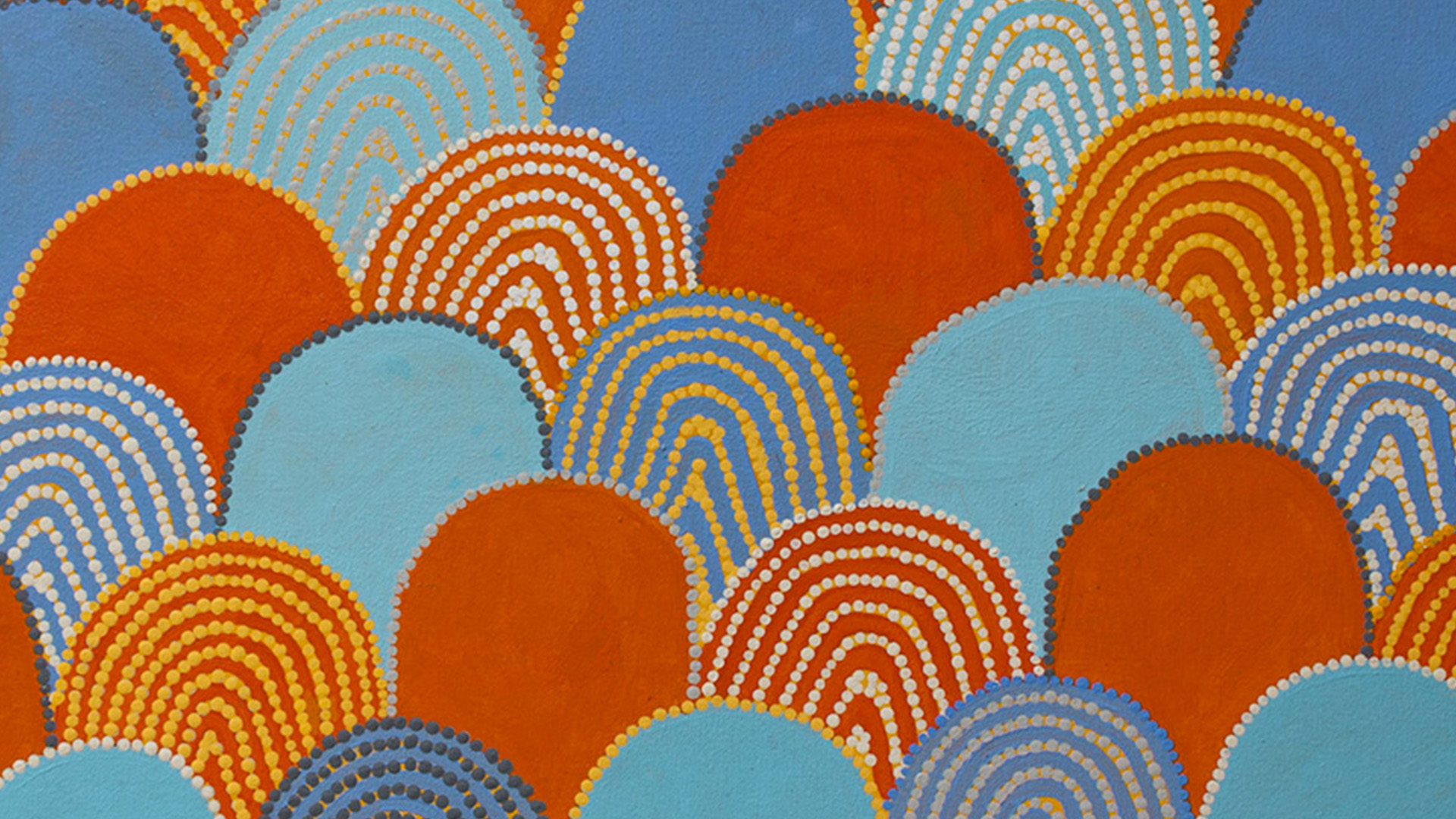
Ikuntji Artists
A lot of stories are still being recounted of long journeys of people from various language groups, who travelled from rockholes and waterholes to caves and mountains finally arriving at Haasts Bluff. The locals, Luritja people of Haasts Bluff, were already here. Thus Haasts Bluff is a community rich of diversity in language and culture.
Ikuntji Artists was first established in 1992, the artists draw their inspiration from their personal ngurra (country) and Tjukurrpa (Dreaming). They interpret the ancestral stories by using traditional symbols, icons and motifs. The artistic repertoire of Ikuntji Artists is diverse and includes for example: naive as well as highly abstract paintings told by each artist in their personal signature style. Throughout the 27 years of its existence the art movement in Ikuntji has flourished and constantly left its mark in the fine art world. At the same time the art centre has been the cultural hub of the community, maintaining, reinforcing and reinvigorating cultural practices through art-making.
Today Haasts Bluff has a population of around 150 people, Ikuntji Artists has eight key artists, who exhibit in Australia and internationally and are represented in major collections across the globe.
Works from Ikuntji Artists exhibit daily through July on the City of Perth’s Northbridge Piazza Superscreen and Forrest Place’s Arts Screen as part of the Goologoolup NAIDOC Screenings. See the festival guide schedule for screening times.
Image credit: Image Credit, detail of
Lisa Multa | Tali at Kungkayunti | 2021
courtesy of Ikuntji Artists
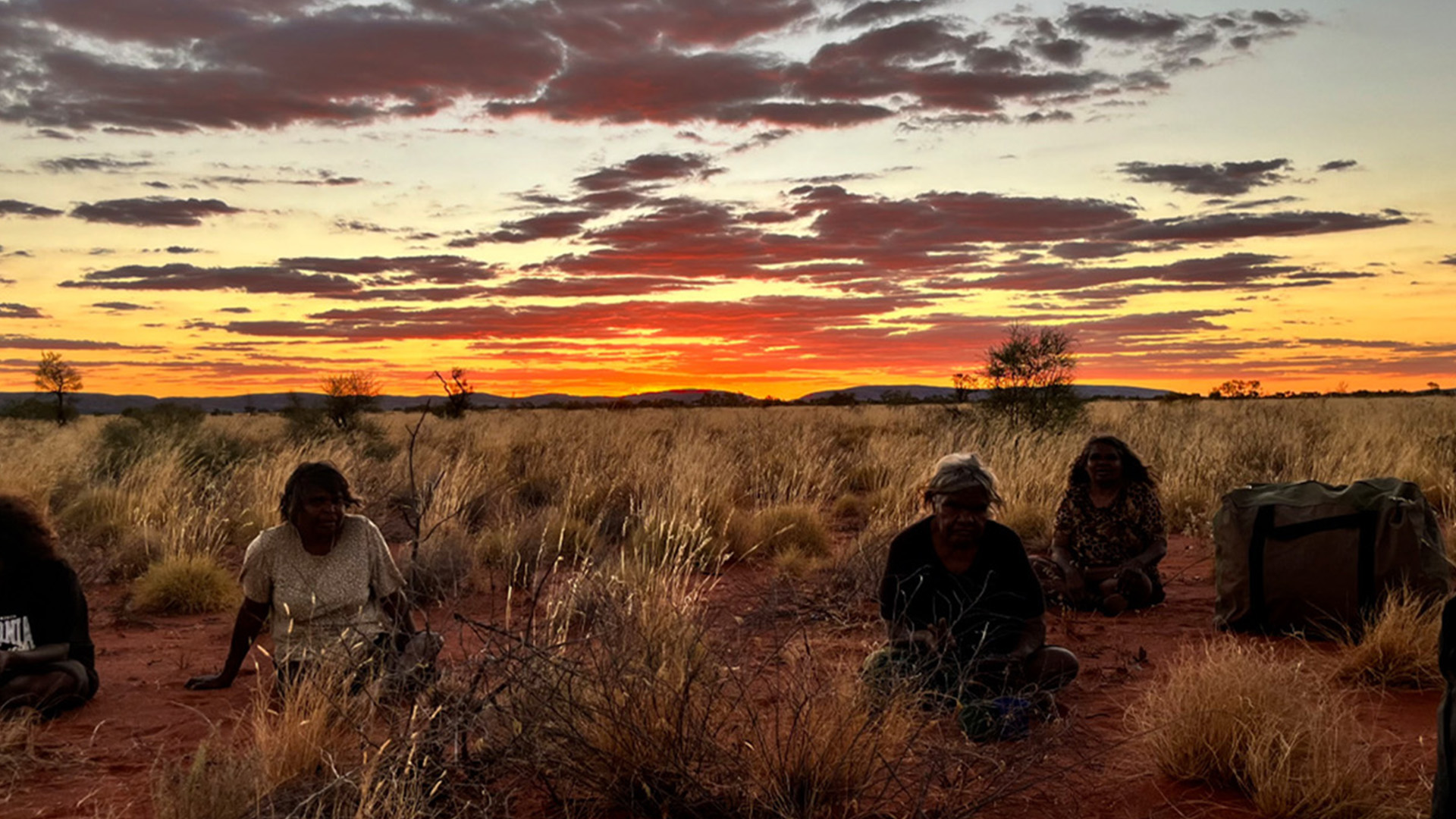
TJANPI DESERT WEAVERS
Tjanpi (meaning grass in Pitjantjatjara language) represents over 400 Anangu/Yarnangu women artists from 26 remote communities on the NPY lands. Tjanpi Desert Weavers is a social enterprise of the Ngaanyatjarra Pitjantjatjara Yankunytjatjara (NPY) Women’s Council, working with women in the remote Central and Western desert regions who earn an income from contemporary fibre art.
Tjanpi artists use native grasses to make spectacular contemporary fibre art, weaving beautiful baskets and sculptures and displaying endless creativity and inventiveness. Originally developing from the traditional practice of making manguri rings, working with fibre in this way has become a fundamental part of Central and Western desert culture.
Tjanpi embodies the energies and rhythms of Country, culture and community. The shared stories, skills and experiences of this wide-reaching network of mothers, daughters, aunties, sisters and grandmothers form the bloodline of the desert weaving phenomenon and have fuelled Tjanpi’s rich history of collaborative practice.
This year’s Goologoolup screening features photographs infused with great humour and charm, providing a glimpse into the work and lives of the renowned artists from the Tjanpi Desert Weavers.
Image Credit, detail of: Tjanpi Desert Weavers Corrina Shepherd, Pauline Golding, Winifred Reid and Dianne Golding | Well-earned rest after collecting Tjanpi near Warakurna, WA | Image by Jade Brockley | Image courtesy of Tjanpi Desert Weavers
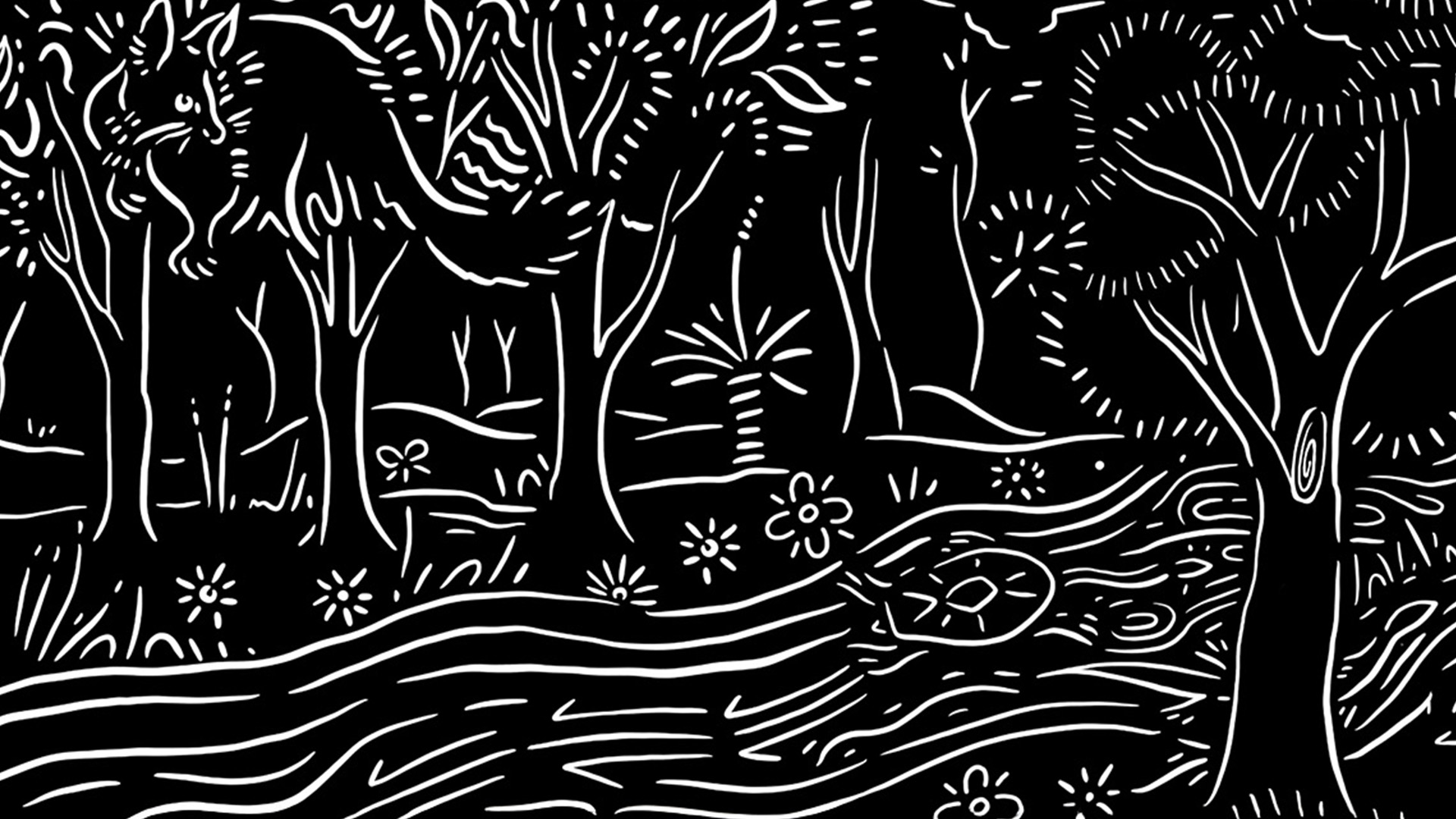
COMMUNITY ARTS NETWORK
Noongar Language Project – Place Names Melville (2022–2024)
Running from 2022 to 2024, Place Names Melville placed Noongar language and cultural knowledge at its core, illuminating the ancient meanings embedded in Noongar place names across the City of Melville. These insights were further explored through the creation of large-scale community artworks.
CAN led this project in partnership with the City of Melville and Moodjar Consultancy.
The project was guided by a committee of 15 local Elders who led the decoding and cultural mapping processes. Their work uncovered the stories, histories, and artefacts associated with each place name. This research formed the foundation for a series of collaborative artworks, created by Elders, community members, students, and emerging creatives, in collaboration with three professional artists-in-residence.
Rooted in the social activism of the 1960s and inspired by the early international community arts movement, the Community Arts Network (CAN) delivers projects where the creative process itself is a catalyst for meaningful change. Often, as exemplified in these documentary films, the process resonates deeply within communities—while the resulting works frequently gain recognition on national and international platforms.
The Goologoolup NAIDOC screening proudly features works emerging from CAN’s annual project slate, including the short films Alliwah and Wagoorjub, alongside new pieces developed through the ongoing Noongar Language Project.
Image Credit: Production still courtesy of Community Arts Network
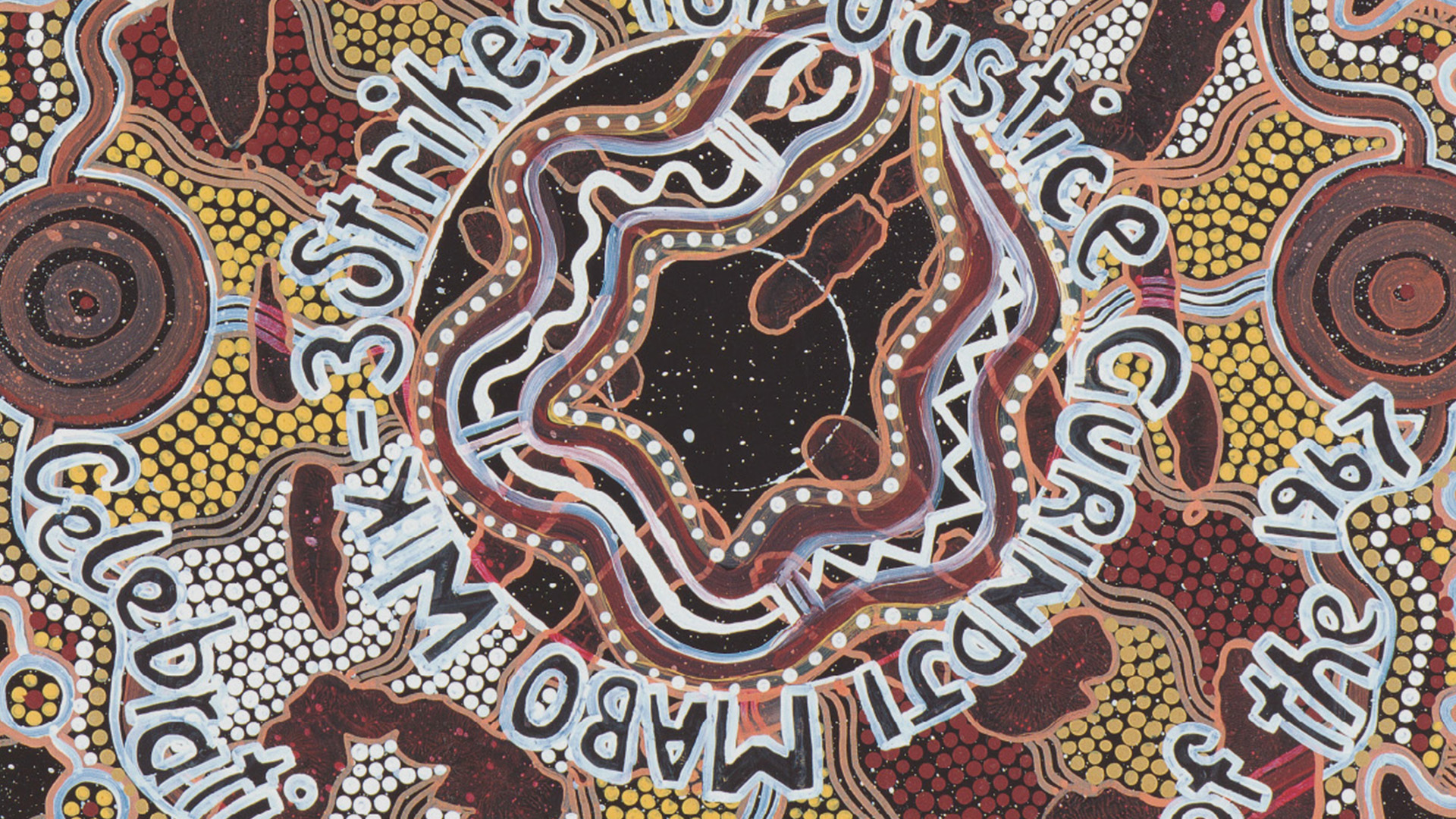
From National Aborigines’ Day to NAIDOC Week: 50 Years of Posters
National NAIDOC Week is celebrated across Australia during the first week of July each year, honouring the history, culture, and achievements of Aboriginal and Torres Strait Islander peoples. A central feature of these celebrations is the annual NAIDOC Week Poster Competition, which invites Aboriginal and Torres Strait Islander artists to submit original artworks responding to the year’s official theme. Since the first poster was produced in 1967, the competition has become an iconic and enduring part of NAIDOC Week.
These posters not only reflect the evolving visual language of Australian political and cultural expression but also serve as a record of the social transformations over the past five decades.
To mark this legacy, a digital exhibition will be presented daily on the City of Perth Urban Screens throughout NAIDOC Week.
Image credit: Image collections | NAIDOC
SLOW TV screenings

Makuru Tv
This program is a collection of slow nature footage taken down in the Serpentine National Park, in Gnaala Karla Boodja, showing the changes in the landscape during the Noongar Season of Makuru.

Makuru sunset
This program is a sunset over the Derbal Yaragan (Swan River) in Mosman Park.
The Noongar season of Makuru, represented by the colour dark blue, symbolises the rain and chilly weather characteristic of this period. During Makuru, the South West experiences its coldest and wettest months. Traditionally, this season was a favourable time to move back inland from the coast as the waterways and catchments began to fill. This ease of movement facilitated a shift in dietary sources from sea, estuarine, and lake foods to land-based provisions, particularly grazing animals like kangaroos.
The slow TV genre, known for its contemplative pace, offers viewers an unedited, real-time experience of life’s rhythms, presenting a peaceful alternative to the fast-paced narratives of mainstream media. It encourages viewers to relax and immerse themselves in the season’s inherent beauty.
SCREENING SCHEDULE
NORTHBRIDGE PIAZZA SUPERSCREEN
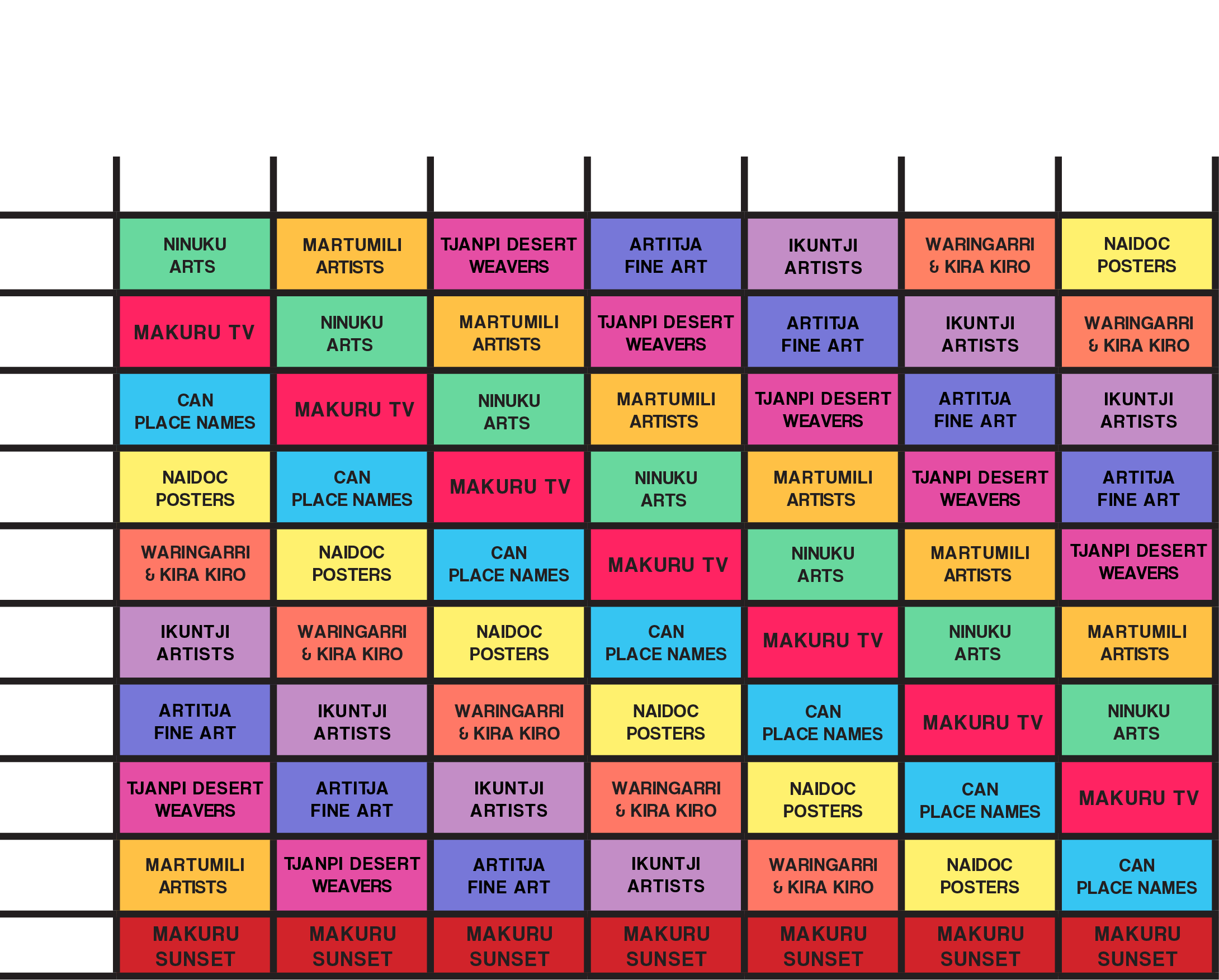
FORREST PLACE ARTS SCREEN
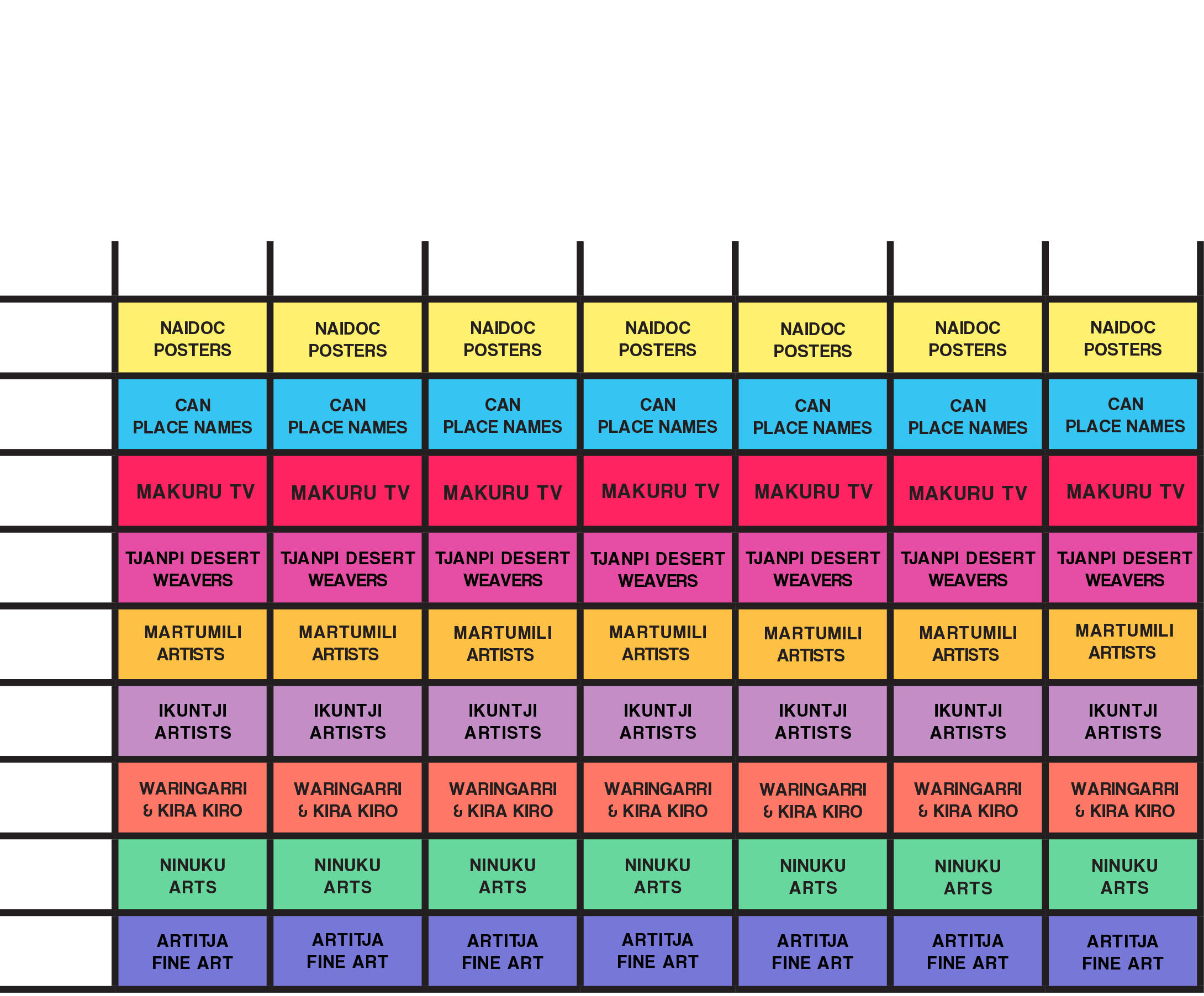
Screenarts acknowledges the Whadjuk people of the Noongar nation as the traditional custodians of this country and its waters, and that we operate on Noongar country.
We pay our respects to Noongar elders past, present, and emerging.
Always was and always will be Aboriginal land.
